Tiger Cave: Rock-Cut Hindu Temple Complex Dated To East India’s Pallava Empire
A. Sutherland - AncientPages.com - The Tiger Cave is an ancient religious site decorated with carvings of mythical creatures and ancient inscriptions and its name originates from tiger head carvings at the mouth of the cave.
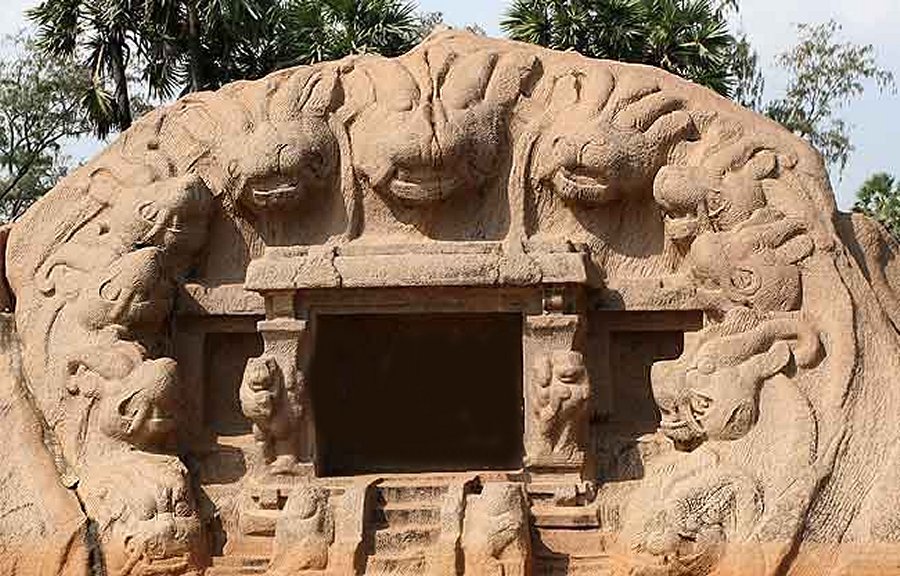
The Yali Mandapam at Mamallapuram, South India - Depictions of Yali, a tiger-like creature are set around the mouth of the cave.
The cave, which is located only 3 miles (5 kilometers) north of the port-city Mahabalipuram in Tamil Nadu, India, is considered to be one of the Mahabalipuram rock-cut temples constructed during the reign of a great warrior, King Narasimhavarman I.
He was a Tamil king of the Pallava dynasty who ruled South India from 630–668 AD.
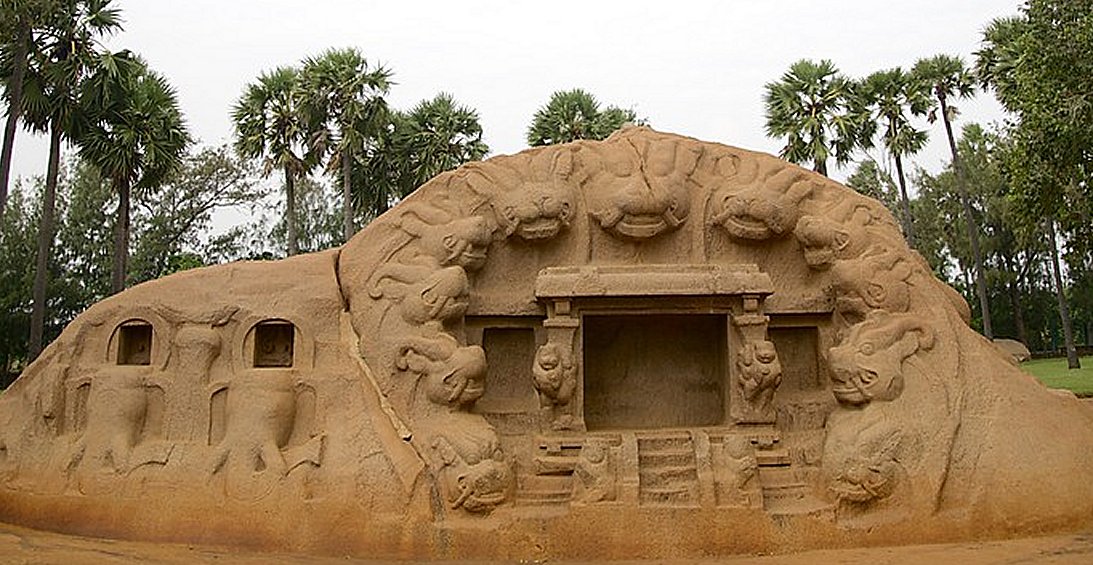
This king was a devotee of Shiva, the most powerful and the most popular deity of the Hindu pantheon, and the one who resides in every being and in all things
Narasimhavarman I is commemorated today, not for all conquests, but for his contribution to the art and architecture of Tamil Nadu. He made Mahabalipuram city, a famous center for sculptors and architects, a place of cave temples, and numerous chiseled shrines. During his reign, the artists of Mahabalipuram created numerous temples, and Narasimhavarman I also built a number of other temples such as the Kailasanatha temple at Kanchipuram.
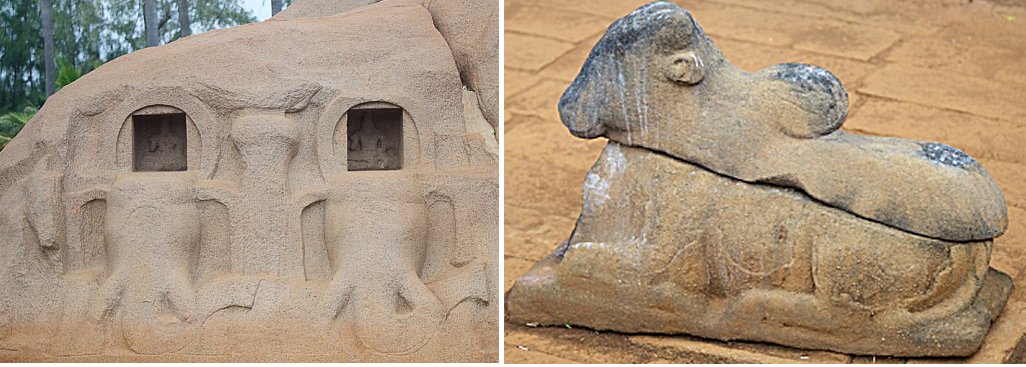
The beautiful, but somewhat bizarre Tiger Cave, was dedicated to the Hindu warrior goddess Durga, usually depicted seated on a tiger. Durga - a unified symbol of all divine forces - is usually depicted as a beautiful woman with ten arms that bear divine weapons to protect all that is sacred.
Durga has its shrine inside the cave, whose name (beginning of the 8th century) was due to the heads of yali - lion-like mythological creatures carved at the entrance.
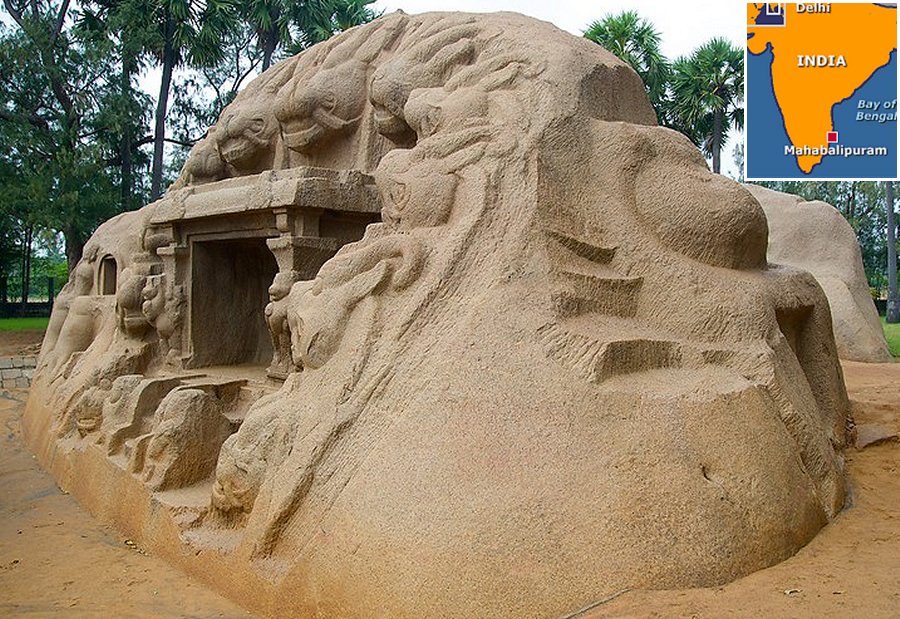
The tiger-like creature – Yali – is a prominent figure of Hindu mythology. According to very old descriptions and references, Yali creature is more powerful than a lion or tiger, may be portrayed as part lion, part elephant and part horse, and in some other similar shapes.
Another striking looking structure of the complex is decorated with wall inscriptions in the Pallava Grantha script, used by the rulers of Pallava. One of the inscriptions found on a rocky outcrop in the Tiger Cave complex in 2005 led to the excavation of a Sangam period Subrahmanya Temple close by.
The Sangam Age was an important chapter in the history of South India.
There are many Tamil legends that say there existed three Sangams (Academy of Tamil poets) in ancient Tamil Nadu. These three Sangams - called Muchchangam - flourished under the royal patronage of the Pandyas, a dynasty of south India. The Pandyas represented one of the three ethnically Tamil lineages, while the other two being the Chola and the Chera.
The rulers of the three dynasties were referred to as "the three crowned rulers (the mu-ventar) of the Tamil country".
The first Sangam was attended by gods and legendary sages but no literary work of this Sangam was available. The second Sangam was held at Kapadapuram but unfortunately, all the literary works had perished except one - Tolkappiyam.
The third Sangam at Madurai was founded by Mudathirumaran. It was attended by a large number of poets who produced a great number of volumes, and again, only a few had survived.
These Tamil literary works remain useful sources to reconstruct the history of the Sangam Age.
Many historians consider the first two Sangam age as mythical as the traditional dates greatly are not in accordance with the historical dating and each Sangam age spanned around 2000 years. The first Sangam age, according to the traditional dates started before 5000 or 6000 BC, at that point in time, the four river valley civilization was in a state of development or yet to be started.
The Tiger Cave has also yet another treasure in the form of a Shiva Linga statue, a phallic tribute to Lord Shiva. In addition to the two cave temples, there are many relief sculptures depicting everyday life in the 7th century.
Written by – A. Sutherland AncientPages.com Staff Writer
Copyright © AncientPages.com All rights reserved. This material may not be published, broadcast, rewritten or redistributed in whole or part without the express written permission of AncientPages.com
Expand for referencesMore From Ancient Pages
-
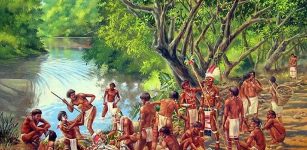 Taíno Indians Are Not Extinct – Ancient Tooth Reveals Indigenous Americans Still Have Living Descendants In The Caribbean
Archaeology | Feb 21, 2018
Taíno Indians Are Not Extinct – Ancient Tooth Reveals Indigenous Americans Still Have Living Descendants In The Caribbean
Archaeology | Feb 21, 2018 -
 Mysterious Deserted Medieval Village And Castle Discovered In The Harz Mountains – 2,000 Artifacts Were Found
Archaeology | Nov 14, 2023
Mysterious Deserted Medieval Village And Castle Discovered In The Harz Mountains – 2,000 Artifacts Were Found
Archaeology | Nov 14, 2023 -
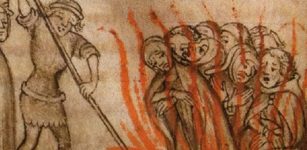 On This Day In History: Knights Templar Arrested – Oct 13, 1307
News | Oct 13, 2015
On This Day In History: Knights Templar Arrested – Oct 13, 1307
News | Oct 13, 2015 -
 Satellite Images Reveal Ancient Mesopotamian City Pre-Dating The Egyptian Pyramids
Archaeology | Mar 10, 2022
Satellite Images Reveal Ancient Mesopotamian City Pre-Dating The Egyptian Pyramids
Archaeology | Mar 10, 2022 -
 A 2,000 Year-Old And Rare Chalkstone Vessel Production Center Unearthed Near Nazareth
Archaeology | Aug 18, 2017
A 2,000 Year-Old And Rare Chalkstone Vessel Production Center Unearthed Near Nazareth
Archaeology | Aug 18, 2017 -
 ‘Vandal’ Of Norwegian Viking Graves Identified But Charges Have Been Dropped!
Archaeology | Nov 9, 2020
‘Vandal’ Of Norwegian Viking Graves Identified But Charges Have Been Dropped!
Archaeology | Nov 9, 2020 -
 On This Day In History: The Great Fire Of London – On July 10, 1212
News | Jul 10, 2016
On This Day In History: The Great Fire Of London – On July 10, 1212
News | Jul 10, 2016 -
 Seven New Ancient Buddhist Caves – One With ‘A Harmika’ – Discovered In Mumbai
News | Jan 19, 2016
Seven New Ancient Buddhist Caves – One With ‘A Harmika’ – Discovered In Mumbai
News | Jan 19, 2016 -
 Ancient Mysteries And Curious Legends Of Chimney Rock And Grandfather Mountain In North Carolina
Featured Stories | Feb 5, 2024
Ancient Mysteries And Curious Legends Of Chimney Rock And Grandfather Mountain In North Carolina
Featured Stories | Feb 5, 2024 -
 1,750-Year-Old Fresco Travertines Buried Underground – Recovered In Ancient Laodicea
Archaeology | Mar 19, 2020
1,750-Year-Old Fresco Travertines Buried Underground – Recovered In Ancient Laodicea
Archaeology | Mar 19, 2020 -
 Manco Capac: Legendary Founder Of The Inca Dynasty Of Peru
Featured Stories | Jun 19, 2016
Manco Capac: Legendary Founder Of The Inca Dynasty Of Peru
Featured Stories | Jun 19, 2016 -
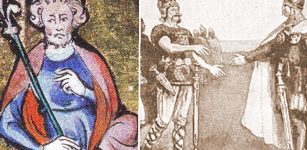 Battle Of Assandun: The Great Battle In English History And A Brief Period Of Viking Dominion In England
Featured Stories | Apr 11, 2016
Battle Of Assandun: The Great Battle In English History And A Brief Period Of Viking Dominion In England
Featured Stories | Apr 11, 2016 -
 Man Finds A Viking Sword In His Garden – A Viking Grave Could Also Be Nearby – Scientists Say
Archaeology | Sep 2, 2022
Man Finds A Viking Sword In His Garden – A Viking Grave Could Also Be Nearby – Scientists Say
Archaeology | Sep 2, 2022 -
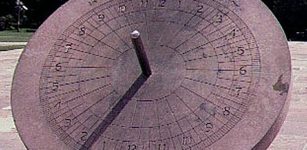 Gnomon: Ancient Time Measuring Instrument Used By Babylonians, Egyptians And Chinese
Ancient Technology | Nov 3, 2016
Gnomon: Ancient Time Measuring Instrument Used By Babylonians, Egyptians And Chinese
Ancient Technology | Nov 3, 2016 -
 Mysterious Mustatils- Giant 7,000-Year-Old Stone Monuments In Saudi Arabia Baffle Scientists
Archaeology | Aug 19, 2020
Mysterious Mustatils- Giant 7,000-Year-Old Stone Monuments In Saudi Arabia Baffle Scientists
Archaeology | Aug 19, 2020 -
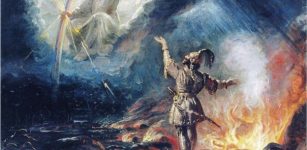 Ukko: Karelian-Finnish God Of Thunderstorms, Harvest, Patron Of Crops And Cattle
Featured Stories | Apr 2, 2020
Ukko: Karelian-Finnish God Of Thunderstorms, Harvest, Patron Of Crops And Cattle
Featured Stories | Apr 2, 2020 -
 DNA Of Nine 13th Century Crusaders Provides A Glimpse Into Soldiers’ Life And Death
Archaeology | Apr 22, 2019
DNA Of Nine 13th Century Crusaders Provides A Glimpse Into Soldiers’ Life And Death
Archaeology | Apr 22, 2019 -
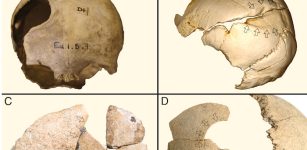 Violence Was Widespread In Early Farming Society – New Study
Archaeology | Jan 23, 2023
Violence Was Widespread In Early Farming Society – New Study
Archaeology | Jan 23, 2023 -
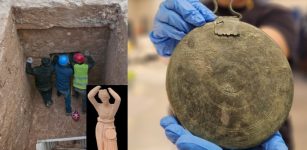 Rare 2,300-Year-Old Tomb Of Greek Courtesan Found In Jerusalem Burial Cave
Archaeology | Sep 28, 2023
Rare 2,300-Year-Old Tomb Of Greek Courtesan Found In Jerusalem Burial Cave
Archaeology | Sep 28, 2023 -
 Medieval Mystery Of The Booted Man Found In The Thames Mud
Archaeology | Dec 10, 2018
Medieval Mystery Of The Booted Man Found In The Thames Mud
Archaeology | Dec 10, 2018
